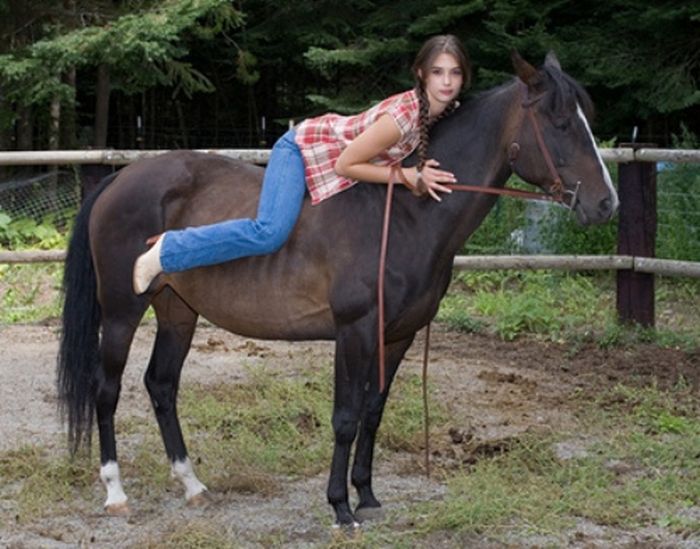|
|
Girl With A Horse
|
Behavior
Horses are prey animals with a strong fight-or-flight response. Their first reaction to threat is to startle and usually flee, although they will stand their ground and defend themselves when flight is not possible or if their young are threatened. They also tend to be curious; when startled, they will often hesitate an instant to ascertain the cause of their fright, and may not always flee from something that they perceive as non-threatening. Most light horse riding breeds were developed for speed, agility, alertness and endurance; natural qualities that extend from their wild ancestors. However, through selective breeding, some breeds of horses are quite docile, particularly certain draft horses. Horses are herd animals, with a clear hierarchy of rank, led by a dominant individual, usually a mare. They are also social creatures who are able to form companionship attachments to their own species and to other animals, including humans. They communicate in various ways, including vocalizations such as nickering or whinnying, mutual grooming, and body language. Many horses will become difficult to manage if they are isolated, but with training, horses can learn to accept a human as a companion, and thus be comfortable away from other horses. However, when confined with insufficient companionship, exercise, or stimulation, individuals may develop stable vices, an assortment of bad habits, mostly stereotypies of psychological origin, that include wood chewing, wall kicking, "weaving" (rocking back and forth), and other problems.
• Intelligence and learning
In the past, horses were considered unintelligent, with no abstract thinking ability, unable to generalize, and driven primarily by a herd mentality. However, modern studies show that they perform a number of cognitive tasks on a daily basis, meeting mental challenges that include food procurement and social system identification. They also have good spatial discrimination abilities. Studies have assessed equine intelligence in the realms of problem solving, learning speed, and knowledge retention. Results show that horses excel at simple learning, but also are able to solve advanced cognitive challenges that involve categorization and concept learning. They learn from habituation, desensitization, Pavlovian conditioning, and operant conditioning. They respond to and learn from both positive and negative reinforcement. Recent studies even suggest horses are able to count if the quantity involved is less than four.
|
|









